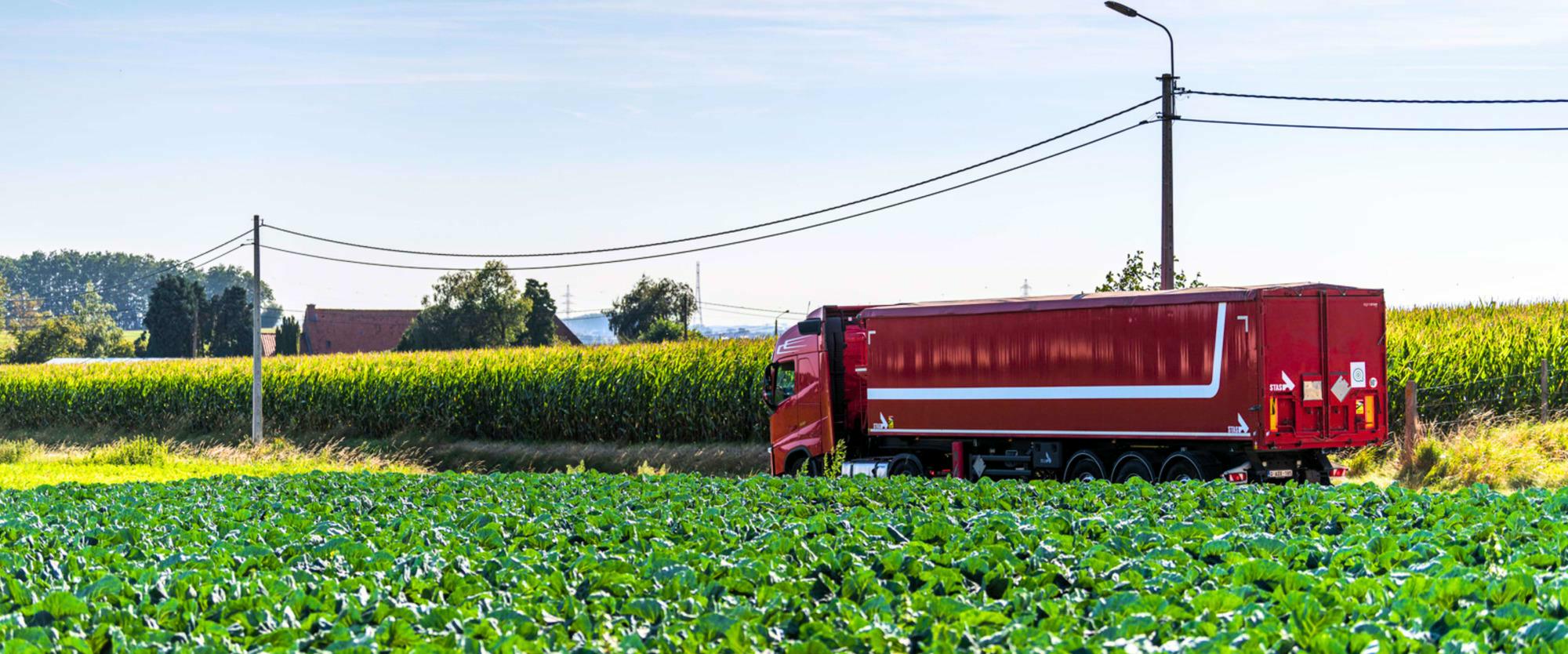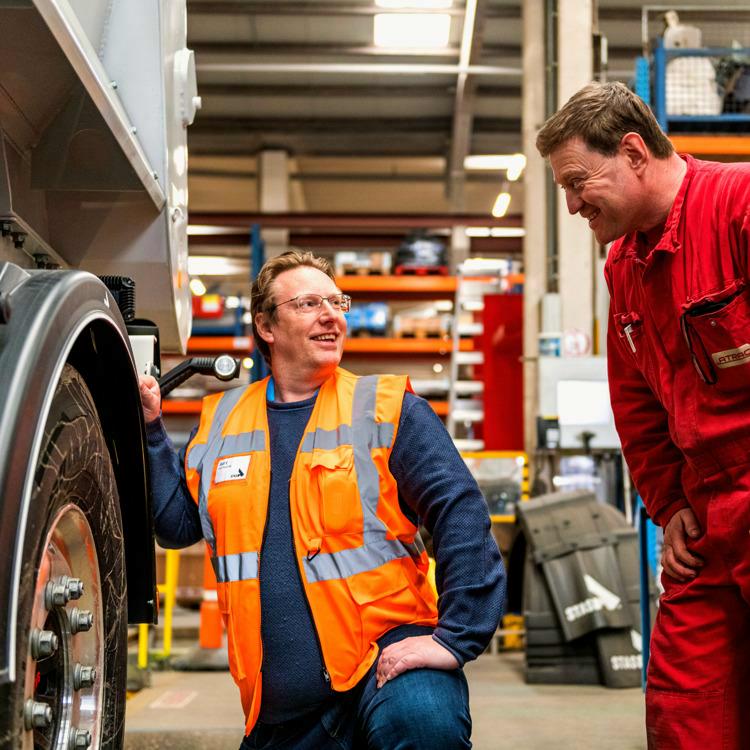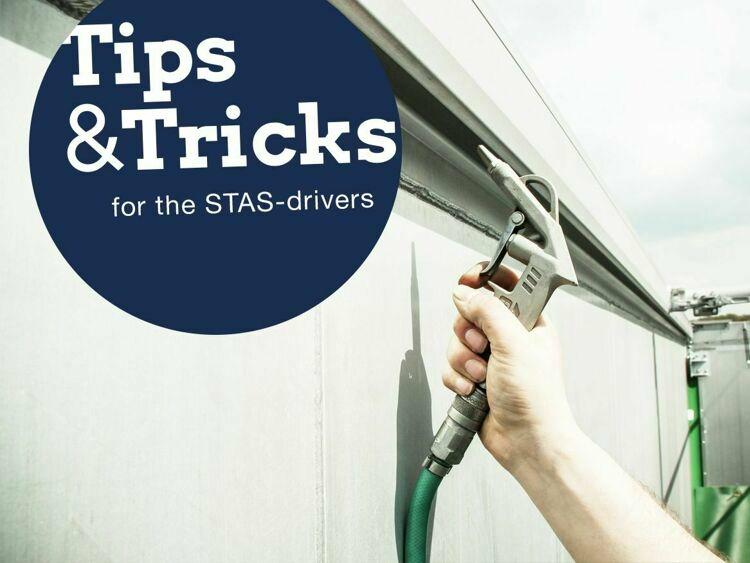Driving economically with your tipper or moving floor trailer: how to use less fuel

Around the world, fuel prices are reaching historically high levels. Transport companies are diligently looking for ways to save on fuel and how they can drive further with the same tank. All the small amounts that are saved, result in savings on fuel costs and CO²-emissions. As a driver, you have the biggest impact on fuel consumption. We’re giving you a few practical tips & tricks to help you save up to 25% on fuel and emissions today, without having to make huge investments.
A new development on the market is axles that store braking power in a battery and use that energy to pull the trailer up. This makes it easy to save fuel. However, we must also express a few reservations about this. At present, the return on investment (ROI) of this solution is still very unclear. Also, the impact of the battery on the environment is still questionable. We have some practical tips & tricks to help you get further with a full tank.
1. Optimise the tractor-trailer combination as much as possible
A well-designed tractor and trailer respond perfectly to the freight that is being transported. Think beyond the initial loads for which you buy the trailer and consider how you can organise return trips. By keeping the trailer as flexible as possible, you can avoid having to drive around empty. ‘Think before you start' is literally worth gold here. Your local STAS dealer will be happy to help you with this.
2. Slow & steady wins the race
By driving at a slower but constant speed you consume as little fuel as possible and emit as little CO² as possible. Enter: cruise control and the speed limiter! Thanks to these functions, you can easily set or limit your speed and drive at a constant rate.
3. Adjust your driving style
Driving at a constant speed also means accelerating and stopping as little as possible. Try to avoid areas with many traffic lights (such as inner cities). Anticipate traffic lights. Do not accelerate to make the green light, only to have to hit the brakes. You will waste twice as much fuel stopping and starting again.
Remember to accelerate slowly, maintain a consistent speed, and brake and accelerate as little as possible. However, you can't avoid the fact that you will never have to brake. If you do have to brake, use the retarder as much as possible (if your vehicle has one). This way, you will brake more on the engine and avoid wear on the brake discs. This will save you on maintenance costs and reduce fine dust from brake wear. Brake as early as possible so that you have as much distance as possible and can slow down gently. Do you want to go even deeper into this? You can have a driving style analysis carried out by a specialised party.
4. Switch off the engine when stationary
With some companies, idling can add up to 15% to fuel consumption. Are you stopping for more than 30 seconds? Then it’s worth the effort to shut down the engine completely and then start it up again. Idling the engine for a long time also has negative effects on the particulate filter and the catalytic converter. In the long run, this can cause the exhaust gas conditioning to be inefficient and thus cause more pollution. It is also possible that the vehicle will no longer pass the environmental inspection and that the particulate filter and/or the catalytic converter will have to be replaced.
When tipping or loading and unloading with a moving floor trailer, ensure that the engine speed remains as low as possible. Unfortunately, increasing the engine speed does not affect the speed of loading or unloading. By maintaining the compressed air system properly, you won't have to wait long for compressed air and you can prevent idling.
5. Check the condition of the tyres, tyre pressure and axle alignment
Make sure your tyres are in optimal condition. Correctly adjusted tyres provide lower rolling resistance, which means less fuel is needed on the road. Premium tyres with low rolling resistance are well worth the investment. Read more about the TPMS and TPRS systems to keep your tyres in top condition.
Axle alignment can also have a big impact. Incorrect alignment of one or more axles not only causes accelerated and uneven tyre wear but also creates extra rolling resistance, which means the tractor must pull extra hard.
6. Always close the sheeting system
When assembling the trailer, a few smart choices can already ensure that your trailer is as aerodynamic as possible. But you can also make improvements after the purchase: for example, make sure that the body of the trailer is always covered. This will make your trailer as aerodynamic as possible, and you will experience as little air resistance as possible.
If you drive a moving floor trailer, you should also adjust the roof spoiler of the truck to the height of the semi-trailer. Is the trailer higher than the truck? Then raise the roof spoiler. If not, lower it. If you change your trailer often, it is better to choose an electrically operated roof spoiler.

7. Air conditioning and electronic devices
You may not realise it, but your air conditioning also consumes fuel. The higher the temperature difference, the more fuel it uses. Other electrical appliances, such as a refrigerator, microwave oven or laptop, can also drain the battery and require recharging with the dynamo, which again increases your fuel consumption. If possible, try to charge your appliances outside the trailer.
8. Have your trailer serviced in good time
It may sound familiar, but sometimes you must invest to save money. And that is certainly the case here. By carrying out full maintenance of the truck and semi-trailer regularly, you can optimise fuel consumption, the vehicle is kept in perfect condition, and you can drive more efficiently and economically. A few things to pay attention to:
- Checking the wheel bearings
- Cleaning of the diesel pump and diesel injectors
- Timely check of axle alignment
- Checking the brakes
9. Load weight
The last item on the list probably surprises you the least. The weight of the load has a major impact on fuel consumption. So don't overload your trailer and stick to the indicated limit. By distributing the load evenly over the entire body, you can also drive more efficiently.
Using as little fuel as possible depends on a lot of factors. And everyone can have an impact on this: the driver, the manufacturer, and of course also the fleet managers/purchasers. If everyone does their part, together we can achieve the best result, i.e. the greatest fuel savings.
Subscribe to our newsletter to receive more tips & tricks:





